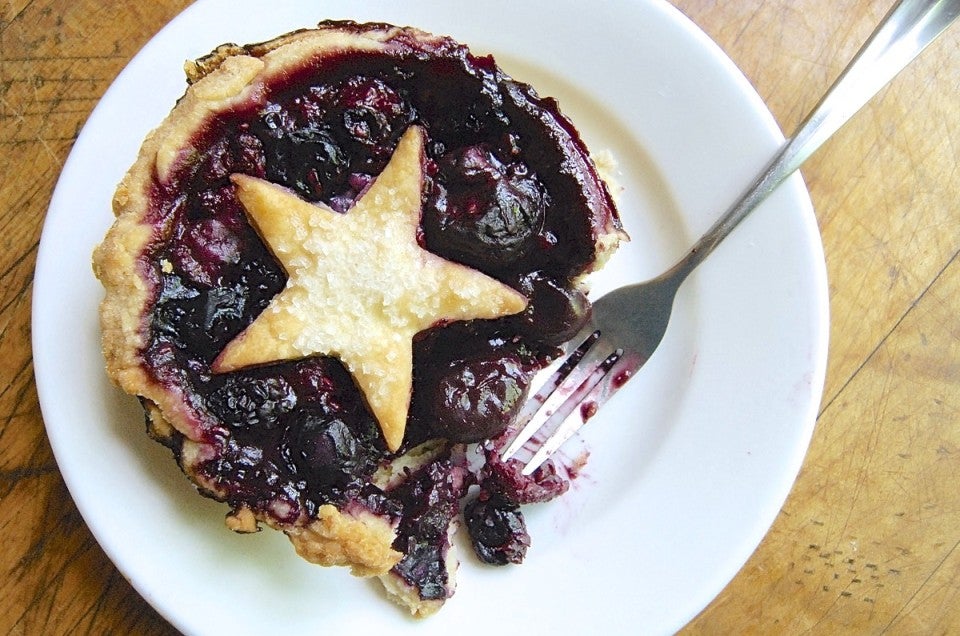


Sugar — we love it! Yet who among us hasn't thought, "I should really cut back on my sugar..." But how do you reduce sugar and still enjoy what you're baking? In previous posts we've addressed lower-sugar muffins, cookies and bars, cake, and yeast bread. Next up: How to reduce sugar in pie.
Many baked goods, particularly cookies and cake, rely on sugar in part for their structure. Reduce the sugar in a crunchy chocolate chip cookie, you get a soft, cake-like cookie. Lower the sugar too far in angel food cake, and you get a rubbery blob.
Thankfully, fruit pie doesn't rely on sugar for its structure. So reducing sugar affects the pie's flavor, but neither the texture of its crust nor the consistency of its filling.
Speaking of crust, some recipes will call for a small amount of sugar in the crust. Sugar helps crust brown, but it also reduces its crispness a bit; so add it or not, it's up to you.
As you experiment and learn about how to reduce sugar in pie, remember these key points:
• Most pie is already quite low in added sugar. The typical apple pie's added sugar-to-fruit ratio (comparison by weight) is below 25%. Berry pies can be even lower. Compare that to cake, whose sugar-to-flour ratio is nearly always over 100%. Clearly, if you're watching your added sugar intake, most types of pie (especially fruit pie) are good dessert options.
• Fruits vary widely in their sweetness. Think a super-tart apple vs. the sweetest raspberry. Even within the fruit variety itself, there can be a huge variance in sugar: there's no comparison between the sweetness of a just-picked, perfectly ripe strawberry and that of a berry that's traveled 3,000 miles from field to supermarket. So when deciding how to reduce sugar in pie, take into account the natural sweetness of your fruit, and adjust added sugar accordingly.
• Sugar provides more than sweetness in pie: it's also a flavor enhancer, much like salt. Pies at the lower end of the sugar spectrum begin to taste bland, as well as less sweet. Sugar can also add a bit of thickening power, since it attracts and holds "free" liquid. When baking low-sugar pies, err on the side of more thickener (cornstarch, flour, etc.) vs. less.
Let's see what happens when you reduce sugar in three favorite fruit pies: apple, berry, and pumpkin.
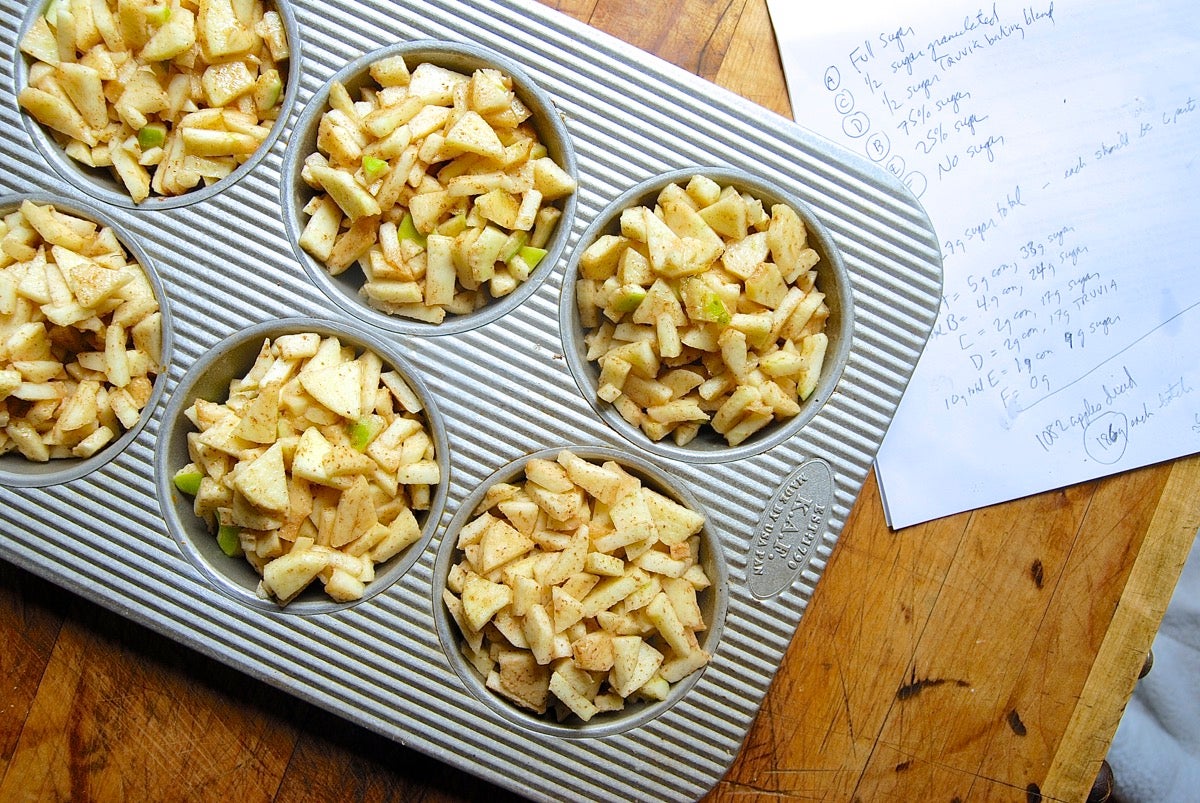
Using our Apple Pie recipe, I bake six variations:
• 100% of the sugar in the recipe
• 75% of the sugar
• 50% of the sugar
• 25% of the sugar
• 0% of the sugar (no sugar)
• 50% of the sugar, substituting Truvia® Baking Blend*
*Many people call our Baker's Hotline asking about using sugar substitutes in baking, and usually we tell them it's not a good idea. As noted earlier, granulated sugar plays a role in the structure of many baked goods. But the sugar in pie filling is there for flavor, not structure — which makes me think it would be a great place for an alternative sugar blend like Truvia® Baking Blend, a reduced-calorie mixture of granulated sugar and Truvia.
(Editor's note: Good news! Since publishing this post, we've introduced our own Baking Sugar Alternative, a 1-to-1 substitute for granulated sugar designed specifically for baking success.)
My apple of choice: Granny Smith, a tart, firm baking apple.
In the interest of time, I omit the crust, and simply use my handy hamburger bun pan to bake the six different fillings.
The result?
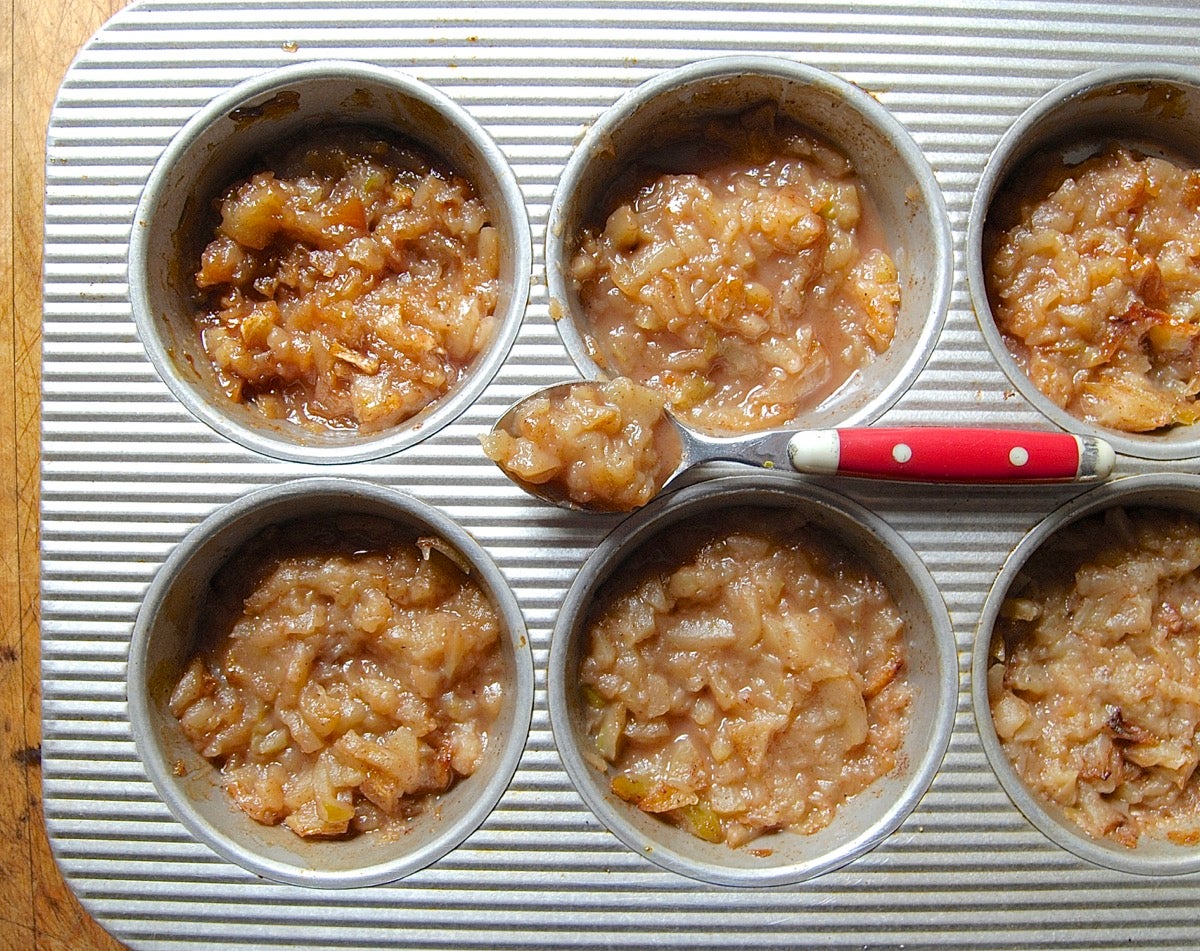
Apple pie — sans crust. As expected, the flavors range from pretty sweet to not sweet at all.
While warm, my preference is for the 50% sugar filling; the flavor of apple and sugar play equal and complementary roles.
Once cool, however, I prefer the 75% or 100% sugar versions. The sweetness of sugar tends to fade a bit at room temperature, and the 50% version tastes bland.
And the texture? The full-sugar filling, upper left, browned a bit more and was slightly more sticky than the other fillings. But I believe this was a result of simply the small portion baked; when I baked the full amount of filling, with crust, in a pie pan, there was no difference in consistency between the full-sugar and 50% sugar versions.
Now, for those of you who are OK with Truvia: score! The 50% sugar pie made with Truvia Baking Blend is just as sweet as the original, 100% granulated sugar pie. I imagine the same would be true with other alternative sugar blends, like Splenda® Sugar Blend.
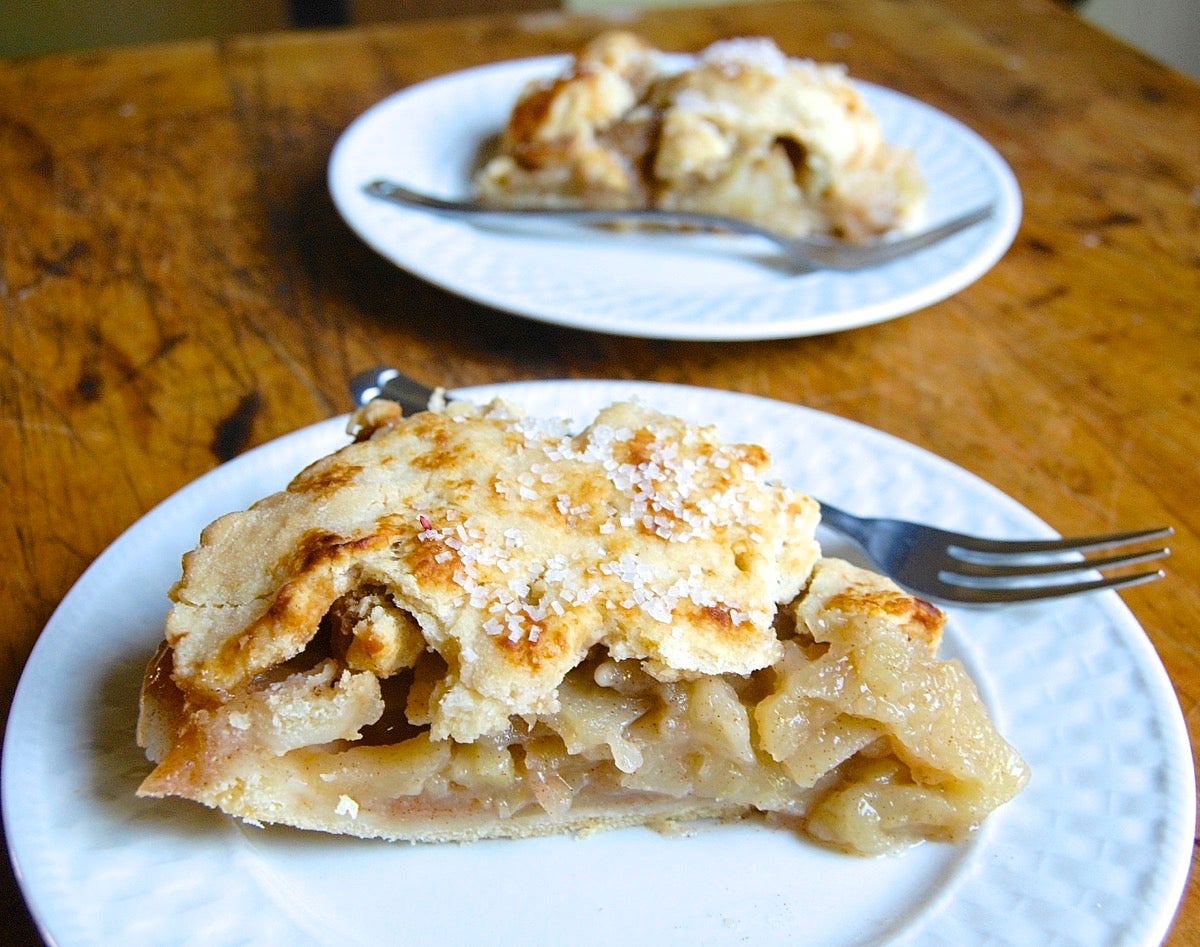
Conclusion: If you're serving pie warm, and especially if it's à la mode, you can choose to reduce the sugar up to 50%. If served plain and/or at room temperature, opt for higher-sugar versions.

I love a good mixed berry pie; the summery flavors, the slight bite of fresh berries, and the happy balance of sweet/tart — all wrapped up in a flaky, buttery crust — are pure heaven.
I do the sugar test using our Mixed Berry Pie recipe, including a crust. Again, a hamburger bun pan is the ideal vehicle for the test. I follow the same process as with apple pie: 100% (original amount of sugar), 75%, 50%, 25%, 0% sugar; and 50% Truvia Baking Blend.
The result?
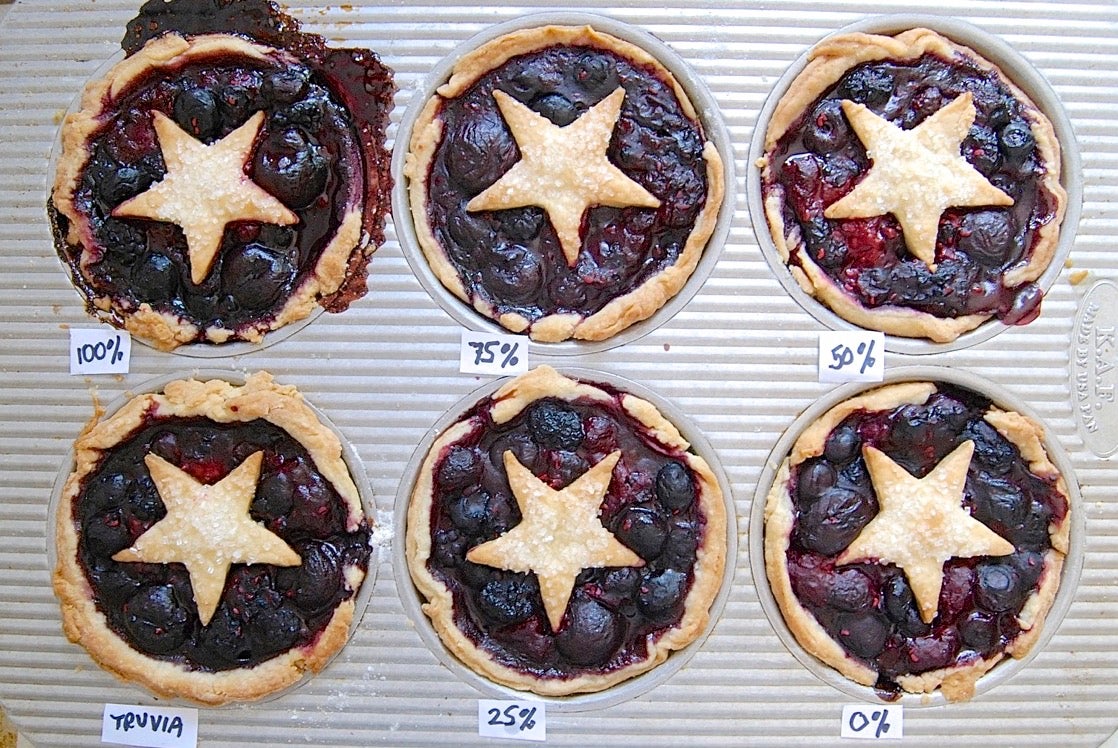
Six yummy little pies! Well, let's make that four; the two lowest-sugar versions don't exactly qualify as "yummy."
Conclusion: As with apple pie, the lower-sugar pies are more acceptable when warm; and/or when served with a sweet accompaniment. The 25% and no-sugar pies might be OK if you use ultra-sweet berries and top with ice cream or whipped cream, but they're pretty bland on their own.
Any texture difference? Not that I could tell.
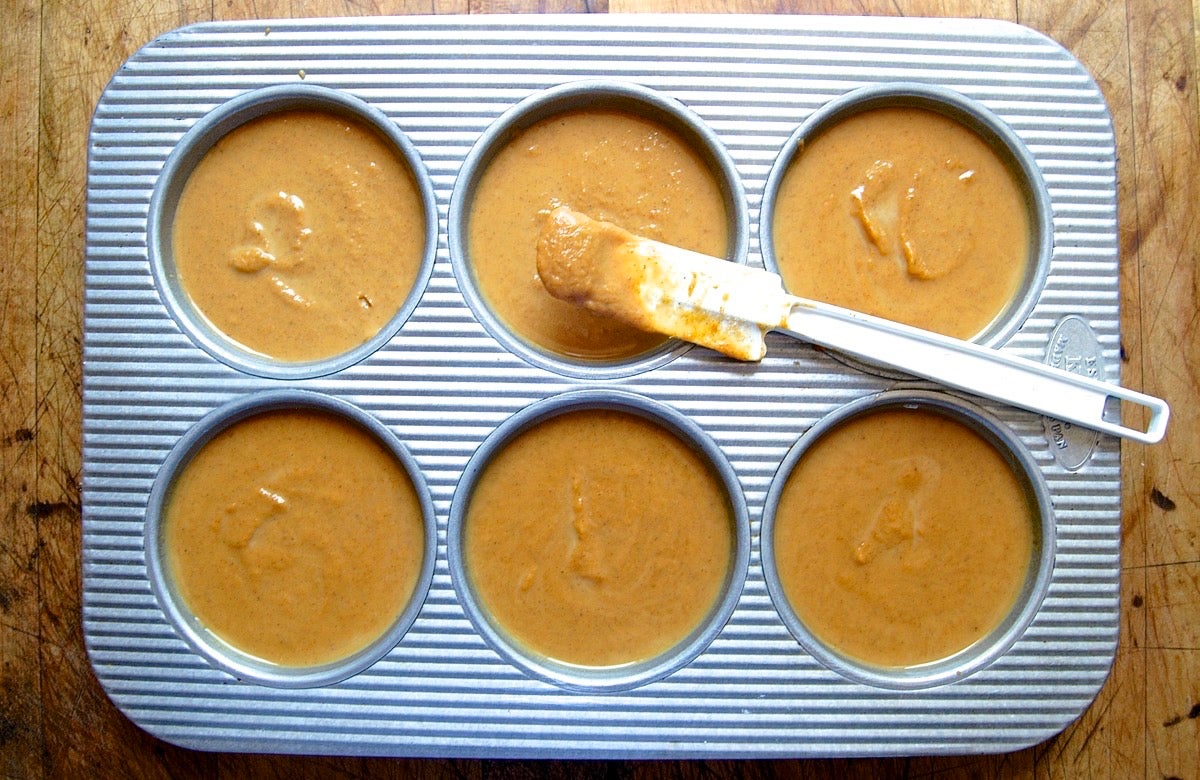
With pumpkin pie, we see an exception to the "pies are generally low in added sugar" rule. Because pumpkin doesn't bring any sweetness of its own to the table, added sugar has to carry the entire load. The sugar-to-pumpkin ratio for pumpkin pie is higher than that of most fruit pies, ranging between 35% and 56% for recipes on our site.
Using my go-to Pumpkin Pie recipe, I execute the now-familiar test: five amounts of sugar, from 100% to 0%, plus 50% Truvia Baking Blend.
I wonder, since pumpkin pie includes egg and milk along with pumpkin, will reducing its sugar affect the pie's texture?
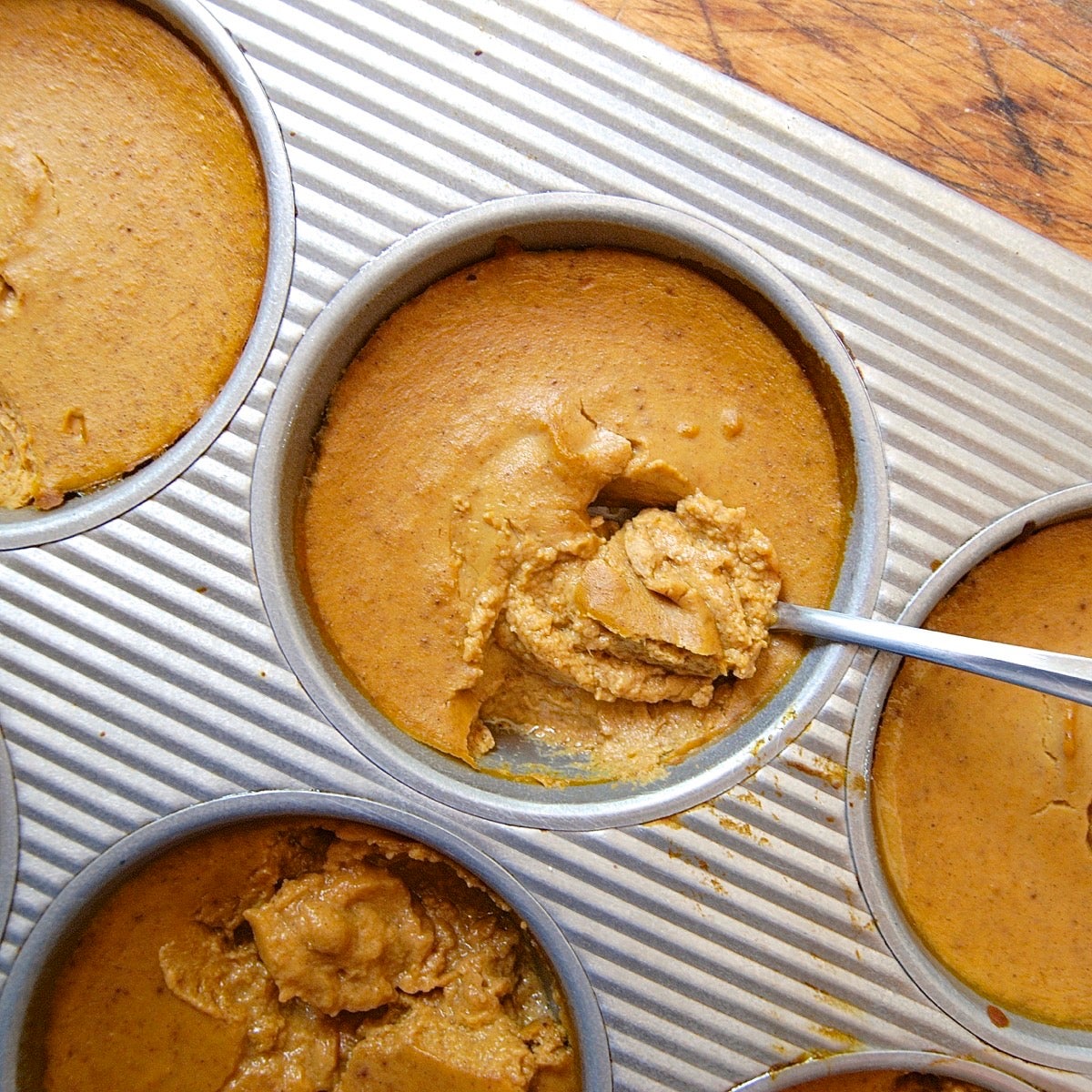
All six pies are super creamy, but I do notice two differences, aside from flavor:
• The lower the sugar, the lighter the pie's color. The 100% sugar pie sports the darkest color, a rich mahogany brown.
• The lower the sugar, the longer the pie needs to bake. Why? Some of us test bakers put our heads together and theorize that sugar attracts and holds water; less sugar means a greater amount of "free" water that needs to evaporate before the pie is fully baked.
Conclusion: I enjoy the 100% sugar, 75% sugar, and Truvia Baking Blend pies equally. And the pie made with 50% of its original amount of sugar is acceptable, especially if served with highly sweetened whipped cream.
As for the other two: My testing notes say, "25% sugar — not good at all. 0% sugar: YUCK."
How's that for concise data entry?
Now how does this information translate to other egg- and milk-based pies, like chocolate cream and custard (a.k.a. vanilla cream pie)?
With chocolate pie, keep in mind you need to use enough sugar to balance the bitterness of the chocolate.
And custard pie — well, remember the"rubbery blob" angel food cake I mentioned earlier? Sugar prevents the protein in egg whites from coagulating; and in an egg-rich pie like custard, lowering the sugar results in more coagulation, which translates to an unpleasantly rubbery texture. A typical custard pie's sugar-to-milk ratio is only about 25%, anyway; for the sake of excellent texture, it's best to leave its sugar as is.
So, when you get right down to it, reducing the sugar in pie is all about taste.
Is there a way to sweeten pie to taste before baking? I mean, you can't just pour sugar over sliced apples and get a real sense of what the resulting apple pie will taste like.
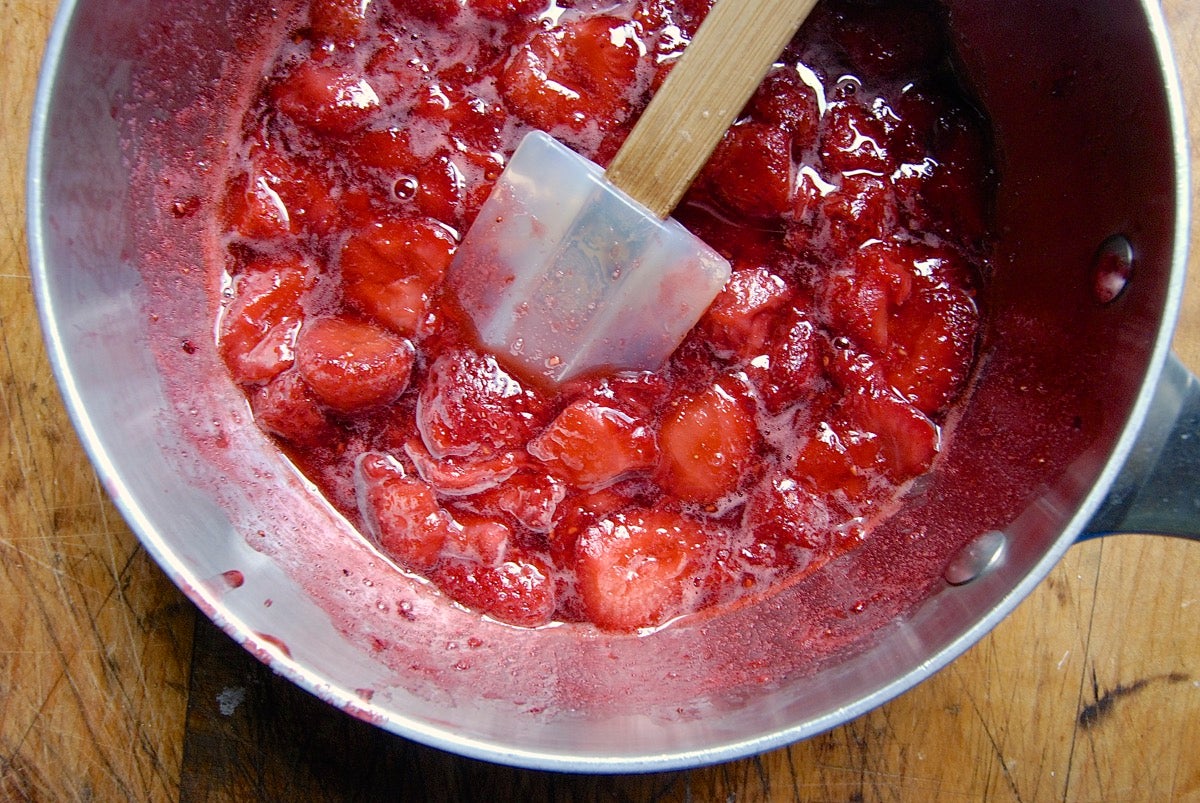
Try this: Place half of the recipe's fruit into a saucepan, adding a couple of tablespoons of sugar and a touch of water if the fruit is dry (e.g., apples, blueberries). Cook over medium heat, stirring frequently, until the fruit has softened and the sugar/juices have become syrupy.
Let cool just enough so you don't burn your tongue, and taste.
Is it sweet enough? Remember, the sweetness will fade a bit as the baked pie cools. If you want a sweeter pie, add more sugar, being sure to measure how much you add.
Once the filling is as sweet as you like, note the total amount of sugar you used.
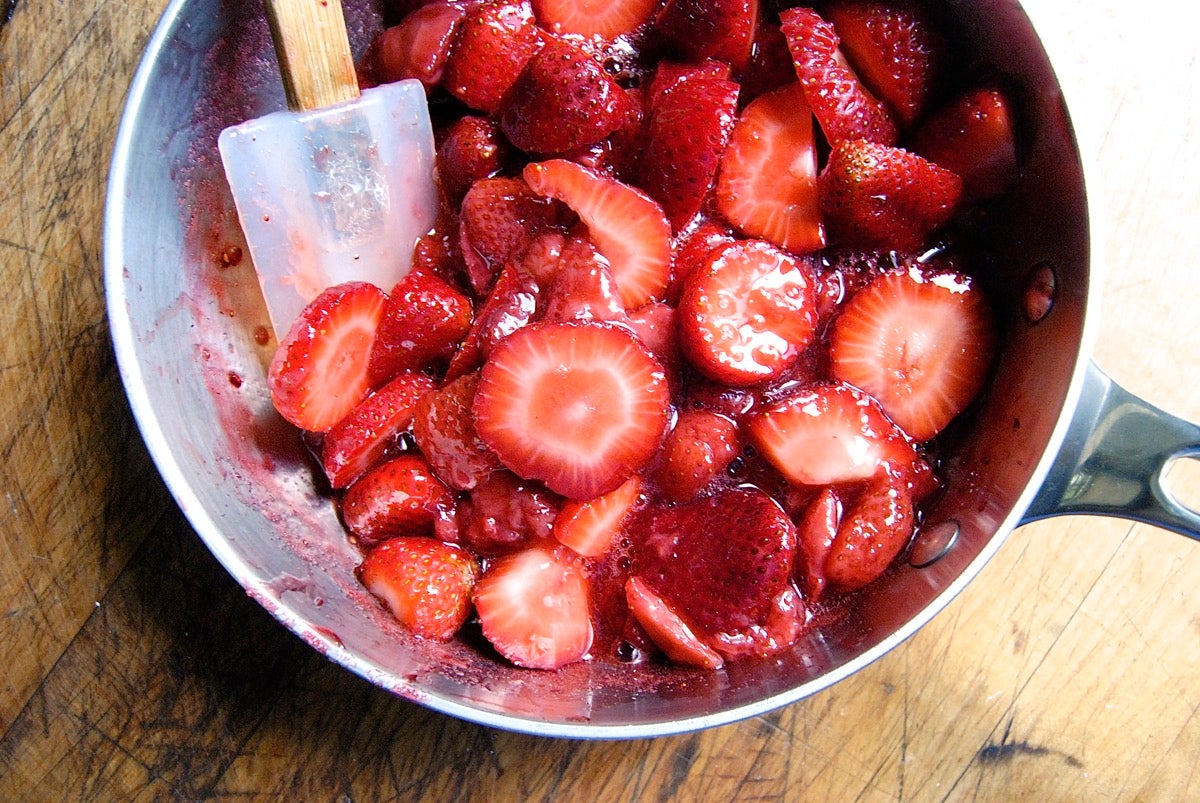
Combine the cooked filling with the remainder of the uncooked fruit. Add the same amount of sugar you added to the cooked fruit — the amount you just jotted down.
Stir everything together, pour into your pie crust, and bake as usual.
Sweeten a pie "to taste?" Yes you can!
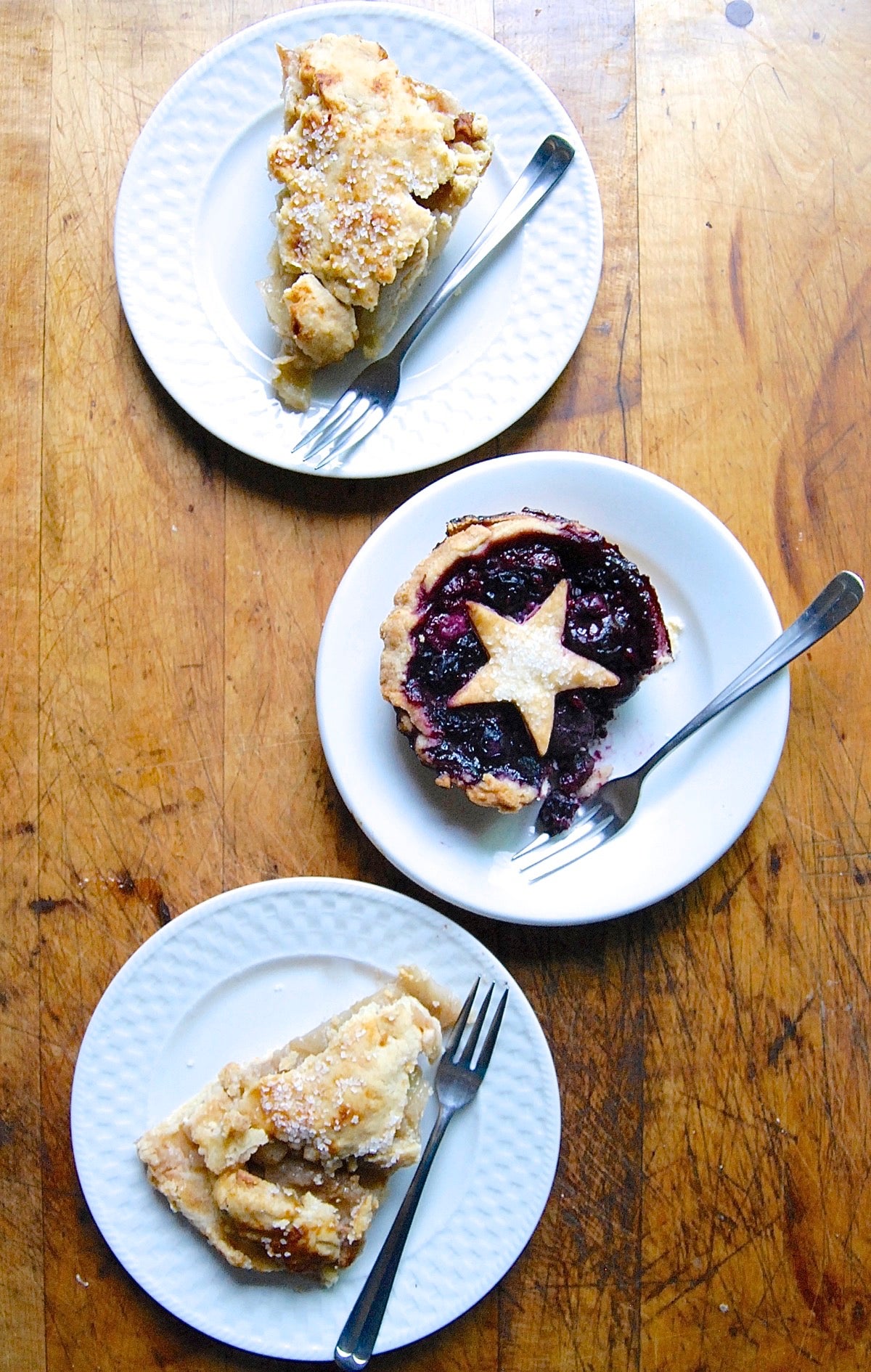
Because I know you'll ask the question: What about pecan pie?
My favorite Pecan Pie recipe checks in with a sugar-to-nut ratio of 267%. Diet-wise, you might as well be eating a candy bar wrapped in crust.
Since sugar is such a key part of this particular pie, I suggest you simply cut yourself a smaller piece and enjoy every sweet bite!
Want more information on reducing the sugar in your baking? Read these posts:
How to reduce sugar in muffins
How to reduce sugar in cookies and bars
How to reduce sugar in cake
How to reduce sugar in yeast bread